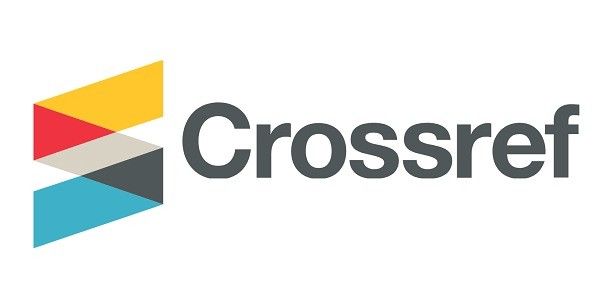Abstract
The exhibition space is a territory where architects and designers have experimented with hybrid and performative spatial qualities. However, such spatial mechanisms have expanded into other spatial practices. As we live in a constantly changing world, these practices allow spatial systems that adjust to continual changes in modes of living. Newer approaches to spatial transformation try to respond to the need for transience and flexibility. Hybrid and performative interventions are elaborated to transform existing spaces with strategic non-architectural rearrangements. As a result, our inhabited spaces, such as exhibitions, are becoming hybrid and performative. However, hybrid and performative may be perceived as tools, or as resulting qualities. The literature review analysis shows many intersections between hybrid and performative. Both terms indicate a flexible built environment that is designed and organised to be multifunctional. Hybrid mostly refers to the various modes of accessing, using and being present in the space, while performative refers to the concept of flexible mechanisms, the openness towards changes and the unpredictable characterisation of a space. Performative is also linked to the ability of the space to multitask and perform different roles, including communicative tasks. This study investigates the repertoire of hybrid and performative through an analysis of a literature review conducted through the lens of exhibition design. We seek to explore and promote applications in spatial interventions and the potential to define a set of analytical tools. Seeing the emergence of a constantly changing world, spatial disciplines are trying to respond with flexible mechanisms. Therefore, newer critical lenses, scholarships, and analytical tools must be investigated, explored, and proposed to cope with such continuous shifts.
Publication Date
7-30-2022
References
Atelier Brückner, A. (2011). Scenography/szenografie: Making spaces talk, projects 2002-2010 Atelier Bruckner. AVedition.
Branzi, A. (2002). Exhibition design as metaphor of a new modernity. Lotus international, 115, 96–101.
Brooker, G., & Stone, S. (2004). Rereadings: Interior architecture and the design principles of remodelling existing buildings. RIBA Enterprises.
Brückner, U. R. (2008). Form follows content: Scenography or the choreographed space. In L. B. Peressut & M. Alsaigh (Eds.), Places & themes of interiors: Contemporary research worldwide (pp. 73–82). FrancoAngeli.
Chan, C. (2011). Measures of an exhibition: Space, not art, is the curator’s primary material. Fillip, 13, 28–37.
Carlson, M. (2008). Perspective on performance: Germany and America. In E. Fischer-Lichte (Ed.), The transformative power of performance: A new aesthetics (S. I. Jain, Trans) (pp. 1–10). Routledge.
Dernie, D. (2006). Exhibition design. Laurence King Publishing.
Eco, U. (1989). The open work (A. Cancogni, Trans.). Harvard University Press. (Original work published 1962)
Fischer-Lichte, E. (2015). Performativity and space. In S. Wolfrum & N. F. von Brandis (Eds.), Performative urbanism: Generating and designing urban space (pp. 31–38). JOVIS Verlag.
Gadanho, P. (2012, February 24). The performative turn. shrapnel contemporary. https://shrapnelcontemporary.wordpress.com/2012/02/24/the-performative-turn/
Griswold, W., Mangione, G., & McDonnell, T. E. (2013). Objects, words, and bodies in space: Bringing materiality into cultural analysis. Qualitative Sociology, 36(4), 343–364. https://doi.org/10.1007/s11133-013-9264-6
Hensel, M. (2013). Performance-oriented architecture: Rethinking architectural design and the built environment. Wiley.
Hirsch, N. (2009). Institution building as curatorial practice. OnCurating. 02, 3–6.
Janson, A. (2015). The performative power of architecture. In S. Wolfrum & N. F. von Brandis (Eds.), Performative urbanism: Generating and designing urban space (pp. 163–168). JOVIS Verlag.
Kassem, A. (2022). Rehearsing a performative theory for architecture. In M. J. P. Neto (Ed.). Creating through mind and emotions (pp. 61–70). CRC Press.
Krasilnikova, E., & Klimov, D. (2020). Design principles of hybrid spaces in terms of urban planning regeneration. Global Dwelling: Approaches to Sustainability, Design and Participation, 193, 89–100. https://doi.org/10.2495/GD170081
La redazione di Domus. (2014, April 9). I 30 anni di Oikos / 29. Domus. https://www.domusweb.it/it/notizie/2014/04/09/i_30_anni_di_oikos.html
Lansroth, B. (2016, October 19). What is installation art and how does it transform our perception? Widewalls. https://www.widewalls.ch/magazine/installation-art
Leatherbarrow, D. (2005). Architecture’s unscripted performance. In B. Kolarevic & A. Malkawi (Eds.), Performative architecture: Beyond instrumentality (pp. 5–20). Spon Press.
Locker, P. (2011). Exhibition design. AVA Publishing SA.
McKenzie, J. (2002). Perform or else: From discipline to performance. Taylor and Francis.
Migliore, A., Ceinar, I. M., & Tagliaro, C. (2021). Beyond coworking: From flexible to hybrid spaces. In M. Orel, O. Dvouletý, & V. Ratten (Eds.), The flexible workplace (pp. 3–24). Springer International Publishing. https://doi.org/10.1007/978-3-030-62167-4_1
Nissen, S. (2008). Urban transformation: From public and private space to spaces of hybrid character. Czech Sociological Review, 44(6), 1129–1150. https://doi.org/10.13060/00380288.2008.44.6.04
Omlin, S. (2012). Perform the space: Performance art (re) conquers the exhibition space.OnCurating, 15, 3–12.
Peltomäki, K. (2010). Situation aesthetics: The work of Michael Asher. MIT Press.
Reinhardt, U., & Teufel, P. (2008). New exhibition design 01. AVEdition.
Reinhardt, U., & Teufel, P. (2010). New exhibition design 02. AVEdition.
Roberts, B. (2014, August 8). Beyond Gordon Matta-Clark. Architectural Record. https://www.architecturalrecord.com/articles/5875-beyond-gordon-matta-clark
Rota, I. (2015). Dialogare con gli oggetti. In L. B. Peressut, G. Bosoni, & P. Salvadeo (Eds.), Mettere in scena, mettere in mostra, (pp.109–115).LetteraVentidue.
Signore, V. (2015). Who said “performative”? Towards a critical posture. In S. Wolfrum & N. F. von Brandis (Eds.), Performative urbanism: Generating and designing urban space (pp. 169–176). JOVIS Verlag.
Tzortzi (2008). The art of exhibiting as a branch of architecture. In L. B. Peressut & M. Alsaigh (Eds.), Places & themes of interiors: Contemporary research worldwide (pp. 37–44). FrancoAngeli.
Willis, K. S., & Aurigi, A. (2011). Hybrid spaces: Presence, rhythms and performativity. 2011 seventh international conference on intelligent environments, 100–106. https://doi.org/10.1109/IE.2011.70
Wolfrum, S., & von Brandis, N. F. (Eds.). (2015). Performative urbanism: Generating and designing urban space. JOVIS Verlag.
Submitted Date
2022-03-14
Accepted Date
2022-07-09
First Page
217
Last Page
236
Recommended Citation
Kassem, A. (2022). Hybrid and Performative Spaces: Towards a New Analytical Lens. Interiority, 5 (2), 217-236. https://doi.org/10.7454/in.v5i2.215
Creative Commons License

This work is licensed under a Creative Commons Attribution-NonCommercial 4.0 International License
Author(s) retain the copyright of articles published in this journal, with first publication rights granted to Interiority.






